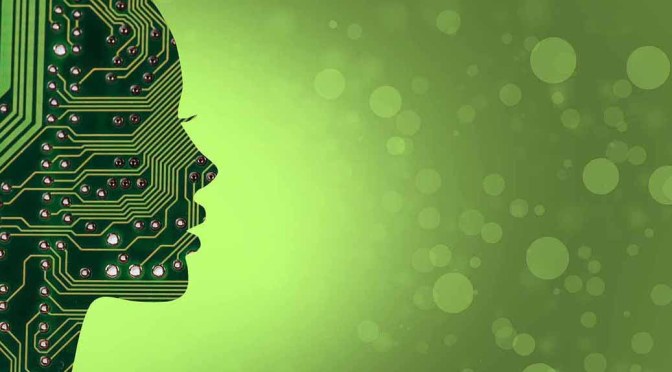Artificial intelligence has become a part of our daily lives, shaping the way we interact, work, and even write. The rapid growth of text-producing technology has raised an interesting question: are these machine-crafted outputs too perfect for their own good? Let’s explore what drives their brilliance and where they fall short.
Key Points:
- AI tools aim for precision, but can lack a human touch.
- Text-generation systems rely on patterns, not actual human insight.
- Flaws often reveal the robotic nature of machine-produced writing.
- Tools can help spot machine-crafted content.
- Artificial intelligence often struggles with nuance and emotional depth.
- Ethical concerns arise about plagiarism and authenticity in machine-created works.
- Users must learn to balance machine assistance with their own creativity.
What Makes AI Writing Seem “Perfect”?

Artificial intelligence tools analyze billions of examples to craft coherent outputs. Their speed and accuracy often leave human writers in awe. Machines are programmed to avoid obvious grammar errors and follow logical structures. This makes their writing appear polished, but it’s often missing something deeper.
The reason behind the perceived perfection lies in the algorithms. Machines pick the most statistically probable words to form sentences. Unlike humans, they have no emotions, creative spark, or personal experiences to draw from. This reliance on formulas leads to mechanical writing. It’s flawless in form but lacks heart.
For example, a machine might generate a love letter with perfect grammar but miss the playful or sentimental tone that makes it truly moving. Human writing thrives on imperfections. It’s those quirks and unusual turns of phrase that make written words feel alive. Machines struggle to replicate that.
Why “Too Perfect” Texts Raise Suspicion
When something is too perfect, it often feels fake. People have learned to associate minor errors or personal touches with authenticity. Flawless writing that flows seamlessly might seem professional at first, but on closer inspection, it starts to feel artificial.
This is why tools like AI detectors have become so important. They can help identify machine-crafted content by analyzing linguistic patterns, word choices, and other indicators. According to ZeroGPT, their AI detector free version excels at pinpointing text that was generated by artificial systems. This gives teachers, editors, and content evaluators a reliable way to ensure transparency.
Imagine submitting an essay with no typos, no awkward phrasing, and a perfectly logical structure, but no sense of voice or individuality. It’s like a photo with an airbrushed filter—it looks good but doesn’t feel real. That’s what makes people question authenticity in machine-produced work. AI detectors offer peace of mind by flagging suspect material.
The Imperfections That Artificial Intelligence Misses

Artificial systems aim for accuracy but often fail when tasked with creating writing that resonates emotionally. Humans bring depth and variety to their work, while machines follow rigid patterns. The differences can be subtle but noticeable.
Common Weaknesses Include:
- Tone mismatch: Machines have difficulty adapting to emotional contexts. A casual email or heartfelt apology can come across as stiff or awkward.
- Overuse of clichés: Machines rely on well-worn phrases to avoid risk, which makes their output feel generic.
- Nuance failure: Machines can’t interpret sarcasm, idioms, or layered meanings. A joke or double entendre will likely fall flat.
Artificial intelligence struggles with creativity. It can mimic, but it cannot innovate. The ability to connect disparate ideas or invent original concepts is something only humans can do.
Ethical Concerns Around AI-Generated Content
The rise of machine-created work has sparked debates about ethics and integrity. Writers fear being replaced, while consumers worry about being misled. The issue often comes down to transparency. Is it fair to present machine-generated material as if it were crafted by a person?
Tools like AI detectors help preserve authenticity. By identifying artificial content, they enable businesses and individuals to use machine assistance responsibly. But even with detection tools, ethical dilemmas persist.
Key Issues Include:
- Authenticity: Readers expect content to reflect genuine thoughts and effort.
- Accountability: Who takes responsibility for errors in machine-written work?
- Plagiarism risks: Machines sometimes pull too heavily from existing material, raising copyright concerns.
Machines can be a helpful resource, but they must be used ethically. Misrepresentation erodes trust, and over-reliance on artificial systems could stifle human creativity.
Balancing Artificial Intelligence and Human Creativity

Machines are here to stay, but they should complement human creativity rather than replace it. Artificial intelligence excels at repetitive or data-driven tasks, but humans bring personality and emotional resonance to writing. Combining both can lead to the best results.
Tips for Balancing Both:
- Begin with your own ideas or outline before using artificial tools.
- Edit and customize machine-generated work to make it your own.
- Use AI detectors to ensure ethical practices and maintain transparency.
By keeping control of the creative process, writers can harness the strengths of machines without losing their own voice. Machines can help you save time, but only humans can inject true passion into their work.
How to Spot AI-Generated Writing
If you suspect a piece of writing was produced by a machine, there are ways to tell. Artificial systems often leave subtle clues in their work. AI detectors make this easier, but even without advanced software, careful observation can reveal the truth.
Signs to Look For:
- Repetitive phrases or overly formal language.
- Lack of humor, emotion, or unique perspective.
- Sentences that feel logically perfect but emotionally flat.
According to studies, readers often find artificial content “lifeless” or “cold” compared to human-authored writing. This highlights the importance of adding personality and flair to any writing process.
Studies on AI’s Strengths and Limitations
Research has shown that artificial systems can improve productivity by up to 40%, particularly in industries that require technical documentation or routine reports. However, studies also highlight key shortcomings. Machines cannot replace human judgment or adapt to rapidly changing contexts.
One study found that artificial intelligence struggles with moral reasoning and abstract thinking. This limits its usefulness in creative fields like fiction, marketing, and journalism. While machines can mimic style, they cannot understand context deeply enough to innovate or inspire.
Final Thoughts

Artificial intelligence has transformed the way we write, but perfection comes with a price. The lack of creativity and emotional resonance in machine-generated material makes it easy to spot—and tools like AI detectors provide an extra layer of assurance. By understanding the strengths and limits of artificial tools, we can use them wisely without sacrificing our own creativity or ethics.
Hey there! I’m Isla Craig. I’ve spent years diving into the ins and outs of the modern workplace, helping people get ahead and feel good about their careers. From boosting productivity to nailing leadership skills and personal growth, I’ve got a bit of experience in it all.
On our website, my mission is simple: give you the tools and tips you need to rock your career and enjoy a balanced life. I’m here to be your go-to source for advice and inspiration, no matter where you are in your professional journey.







